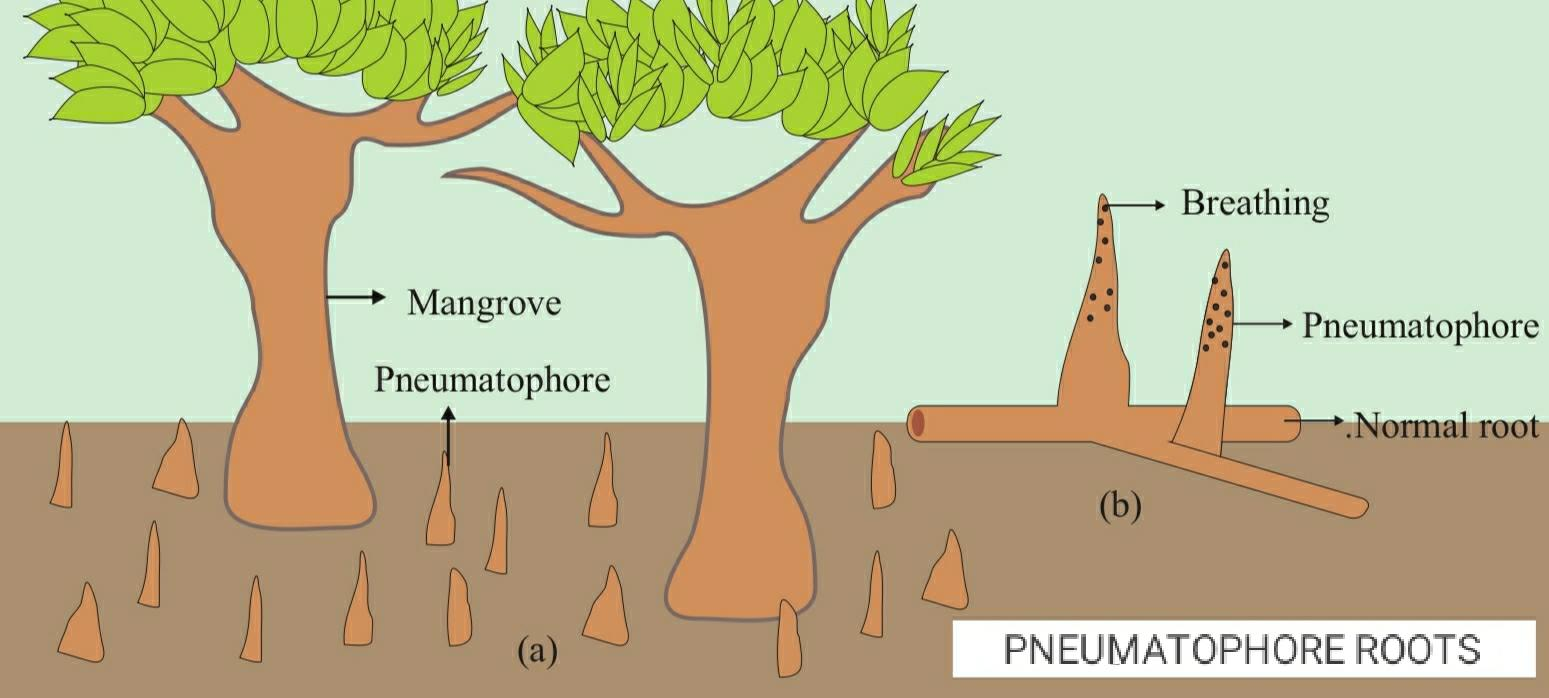
Pneumatophores are
A. Negatively geotropic
B. Positively geotropic
C. Negatively phototropic
D. Thigmotropic
Answer
460.5k+ views
Hint: Pneumatophores are modified specifically for the aerial roots stemming from a subterranean root system, which helps the plants to use air in waterlogged soil habitats. Pneumatophores are adventitious roots. The term mangrove is also applied to the thickets and forests of these plants.
Complete answer: Another name of Pneumatophores is called breathing roots. These are available in mangrove trees. These are the changes in the root which develops in a similar direction as that of the shoot. Therefore, they are negatively geotropic as well also positively phototropic.
Additional information: Pneumatophores are modified root structures that develop out from the surface of the water and help in the aeration necessary for root respiration in case of hydrophytic trees such as many of the mangrove species like (e.g., Avicennia germinans and Laguncularia racemosa), bald cypresses, and cotton (tupelo) gum (Nyssa aquatica). Mangrove, any of certain shrubs and trees belonging primarily to the Rhizophoraceae which typically have support roots, i.e., visible support roots. The term mangrove is also applied to the thickets and forests of these plants.

So, the correct answer is Negatively geotropic.
Note: In some plants like Rhizophora which grow in swampy areas, many roots come out of the ground and grow vertically upwards to obtain oxygen, these roots are called pneumatophores. Mangrove, any of certain shrubs and trees belonging especially to the Rhizophoraceae. That grows in thickest forests which includes the tidal estuaries, in mudflats and on muddy shores; and which typically have support roots, i.e., exposed support roots.
Complete answer: Another name of Pneumatophores is called breathing roots. These are available in mangrove trees. These are the changes in the root which develops in a similar direction as that of the shoot. Therefore, they are negatively geotropic as well also positively phototropic.
Additional information: Pneumatophores are modified root structures that develop out from the surface of the water and help in the aeration necessary for root respiration in case of hydrophytic trees such as many of the mangrove species like (e.g., Avicennia germinans and Laguncularia racemosa), bald cypresses, and cotton (tupelo) gum (Nyssa aquatica). Mangrove, any of certain shrubs and trees belonging primarily to the Rhizophoraceae which typically have support roots, i.e., visible support roots. The term mangrove is also applied to the thickets and forests of these plants.

So, the correct answer is Negatively geotropic.
Note: In some plants like Rhizophora which grow in swampy areas, many roots come out of the ground and grow vertically upwards to obtain oxygen, these roots are called pneumatophores. Mangrove, any of certain shrubs and trees belonging especially to the Rhizophoraceae. That grows in thickest forests which includes the tidal estuaries, in mudflats and on muddy shores; and which typically have support roots, i.e., exposed support roots.
Recently Updated Pages
Master Class 11 Accountancy: Engaging Questions & Answers for Success

Express the following as a fraction and simplify a class 7 maths CBSE

The length and width of a rectangle are in ratio of class 7 maths CBSE

The ratio of the income to the expenditure of a family class 7 maths CBSE

How do you write 025 million in scientific notatio class 7 maths CBSE

How do you convert 295 meters per second to kilometers class 7 maths CBSE

Trending doubts
10 examples of friction in our daily life

One Metric ton is equal to kg A 10000 B 1000 C 100 class 11 physics CBSE

Difference Between Prokaryotic Cells and Eukaryotic Cells

State and prove Bernoullis theorem class 11 physics CBSE

What organs are located on the left side of your body class 11 biology CBSE

Write down 5 differences between Ntype and Ptype s class 11 physics CBSE




